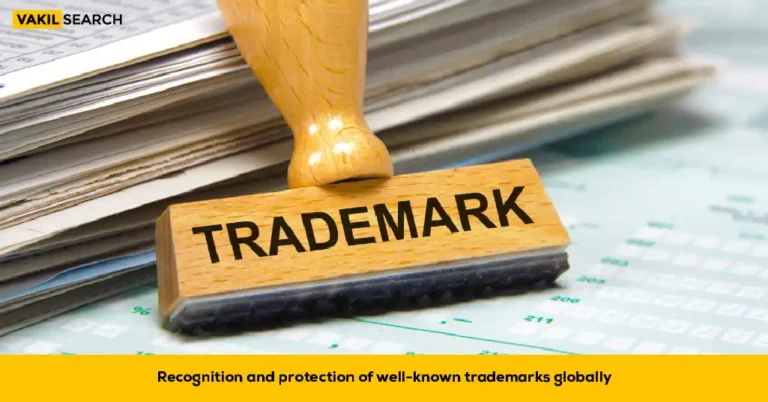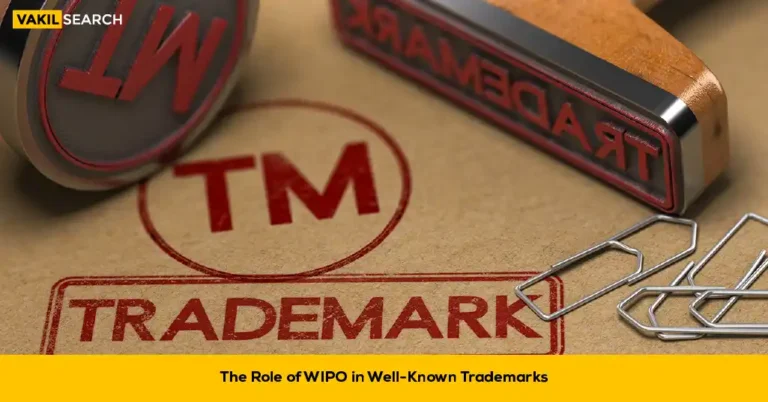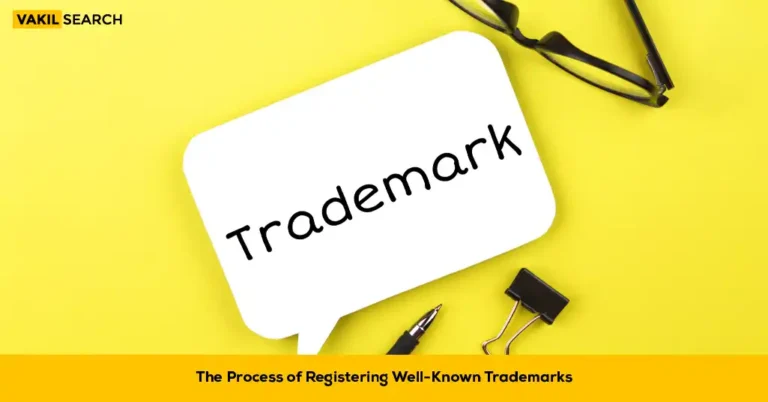Read this blog to comprehend what the assignment of trademark is all about, and the benefits, the advantages and the requirements of the same. It majorly discusses and mentions what pre-requisite documents are required for the Assignment of Trademark. Find out more details on this blog.
Documents Required for Assignment of Trademark: When an individual, business entity, or organization (private/ non-profit) claims the sole right to a product or a kind of service and establishes the source of the products and services that can credit them as rightful owners, they attain or are assigned the Trademark of the object or service. It could be a design used commonly but developed by the individual, business or organization, that would help potential customers and other people working in the same field or sector, recognize and associate the product or service with its source, regardless of where it is seen.
The Trademark name search tool at Vakilsearch lets you find the previously registered trademarks to avoid copyright infringement.
Assignment of Trademarks and their Major Types
In the Trademark Act of 1999, it is permissible for a trademark assignor, who is also the owner of the product or services at present, to choose to sell the ownership or the license which made the product or service unique to him and his property, like any other proprietorship, be it of land, estate etc. The one to who the trademark is assigned, and is the owner of the license henceforth is the assignee in the relation. Assignment of Trademark is a complicated process with legal consequences and proceedings.
Hence it is advisable that owners who are willing to transfer the entitlement, rights, yields and benefits of the product and services they own, to another, should hire legal advocates to go about the process in a fool-proof manner and not incur any legal misgivings through and through. It should also be noted that, by law, only the one who is registered as the legal owner of the trademark is accredited for property ownership and it is imperative that he alone, is considered eligible as assignor to confer the same upon another person, i.e., assignee.
There are various kinds of trademark assignments, broadly self-directive, complete ownership and partial ownership of the license. This has been discussed below:
A complete ownership is, as the name suggests, the complete, uncompromised transfer of license, profits, title, trademark, interests and business as a whole to another person, business organization or legal organization that has complete rights over the products that were sold under the trademark from before, as well as the potential new add-ons. This also maintains the obvious, that the previous owner, who is the assignor, in this case, has no rights and irrevocable surrenders from the ownership of the product and the license of Trademark.
Partial ownership is the selective transfer of product and license ownership. The assignor doesn’t unconditionally confer the title, interests and ownership of the Trademark products to another individual, business or company organization. It is maintained that the interests and benefits only of the products and services whose ownership has been agreed upon to be transferred to another person, organization, or business, are the ones that the assignee can lay claim and henceforth, the ownership of the trademark over, too. It is established that no party shall intervene in ownership rights on products segregated by partial assignment of Trademark, that is, even though the conference of the Trademark or service marked brand is retained for some of the products and transferred for others.
Assignment with Goodwill and Assignment without goodwill are the two self-directive ways of conferring the license, interest, and as a result, the Trademark of products and services in such a way that the assignor pre-determines the usability of the license and brand name for the product and services, thereafter. In assignment with goodwill, the assignor permits the assignee complete whole rights to use the trademark name for the product and services that it had been attained for as well as other products and services which the assignee may develop in the future or years to come. Whereas, assignment without Goodwill is the conferral of title, interests, license, ownership as well as a complete profit of the trademark brand by the assignor to the assignee who carries forward the brand trademark but cannot sell anything other than what is directly associated to the brand, under the Trademark name.
Benefits of Assignment of Trademark
When an individual, business entity, legal organization etc. recognises and lays its claims and rights over a product, design or any other similar entity through a Trademark or a Service mark, it gains complete entitlement over it, to sell, transfer, license, charge or make amendments as and when it wishes to. When the owner wishes to sell or give up the license or ownership to another person, organisation or company, he will take the role of an assignor who holds the rights to impart with the business and the trademark, partially, wholly, with or without goodwill. After calculating and measuring the pros and cons of the action that the assignor shall take, the assignee is required to produce the respective things.
- The assignment of the Trademark, helps the current owner, the one who transfers the license and interests of the business and hence the trademark too, materialise the brand name and value, by selling the ownership or proprietorship, for a good price, to someone who can be an efficient handler of the same, thereafter.
- The one who is assigned the Trademark, and ownership of the assets, interests and license of the business, can exercise control and build on an existing brand, and seek profits by the virtue of it.
- The presence of a written agreement helps settle any dispute, in the furtherance of the assignment of Trademark, be in the immediate future or years to come, as both expand their businesses.
Pre-Requisites for Assignment of Trademark
The assignment of a Trademark cannot be a verbal commitment or promise. It should be legally formularised in a writ and should be discussed with the assignee and the assignor, both of whom shall be acquainted in the event of any changes.
The assignment of a trademark necessitates the existence of two entities, organisations, businesses or individuals, one of who is the surrendering owner or the current owner of the license or trademark, and the other who shall be conferred the titles and interest and ownership, partially, wholly, with or without goodwill. According to Section (2) (1) of the Trademark Act of 1999, the two parties shall be named the assignor and the assignee.
Before the trademark assignment can commence, the assignor should be sure of the unconditional surrender of partial or whole of his business interests under the trademark assignment. They should only enter the litigation processes after being sure about the conferral of interest and titles involved in a general Trademark assignment.
The rates of the Assignment of Trademark should be discussed beforehand with the assignee, and the assignor should make thoughtful inception to the amount that looks appropriate for the assignment of a trademark to the concerning body, business, entity, enterprise or legal organisation.
Process of Assignment of Trademark
The entire process of Assignment of Trademark is gone about through a legal setting, with chronological legal setups, that finalize and establish whichever type of legal assignment of Trademark, that both parties have finalised on, depending upon the proprietor of the trademark (assignor) assigns his/her rights in the trademark through a trademark assignment agreement to the assignee.
To legally transfer or confer the license and rights of the business, the assignment of trademark needs to be applied for. The assignor or the one who presently owns the license and trademark could apply for the Assignment, and so could the Assignee. There’s the provision for both parties to apply together. This results in the issuing of a form TM-P. the form TM-P should be issued within 6 months from the date the assignment of the Trademark had been officiated. The registrar files for the Form TM-P and takes it from there.
A copy of the form with specified details, regarding the name of the assignor and assignee parties, the date and time of the official assignment of trademark, photographs, and signatures consenting to the deal, is also retained with the registrar as well as sent forward to be submitted at the registrar of Trademarks.
Upon the receipt of the trademark assignment application (form TM-P) and required documents, the registrar of trademarks will register the assignee as the proprietor of the trademark and record the specifications of the assignment in the register.
- The assignor should in clear words hand over the pre-determined and discussed deal, without any self-made changes that the assignee is not familiar with from before, and officially assign the trademark.
- It should also mention if this Assignment of the trademark could be continued by legal heirs and remain lawfully relevant and effective
- The witnesses and partakers (assignor and assignee) should provide their signatures, and identity proofs and mention the date and time of the Assignment of Trademark.
Documents Required for Assignment of Trademark
The assignor and assignee should be able to produce the following documents for the formularization of the final assignment of the trademark, and it is imperative to procure the documents during the legal processes they’re involved in to enter a Trademark assignment agreement.
- Trademark certificate.
- NOC that is signed by the current proprietor, or assignee.
- Identity proofs of both parties involved and of respective witnesses too
- A list of dos and don’ts, which officially state what is permissible for the future owner t do with the Trademark (legally inheritable or not, assigned with or without goodwill etc.)
Conclusion
Claiming proprietorship over products or designs and services is highly beneficial because it prevents infringement of product and service rights as item, as the product is directly reinstated with its owner at all times till only he wishes to decide an assignment of Trademark. Trademark registration and service marks help a product stand out and remain distinguished from the others in the field and not get addlepated with random claimers and profit-makers over the same. To know more about this, you can get in touch with the experts of Vakilsearch.
Read more:










